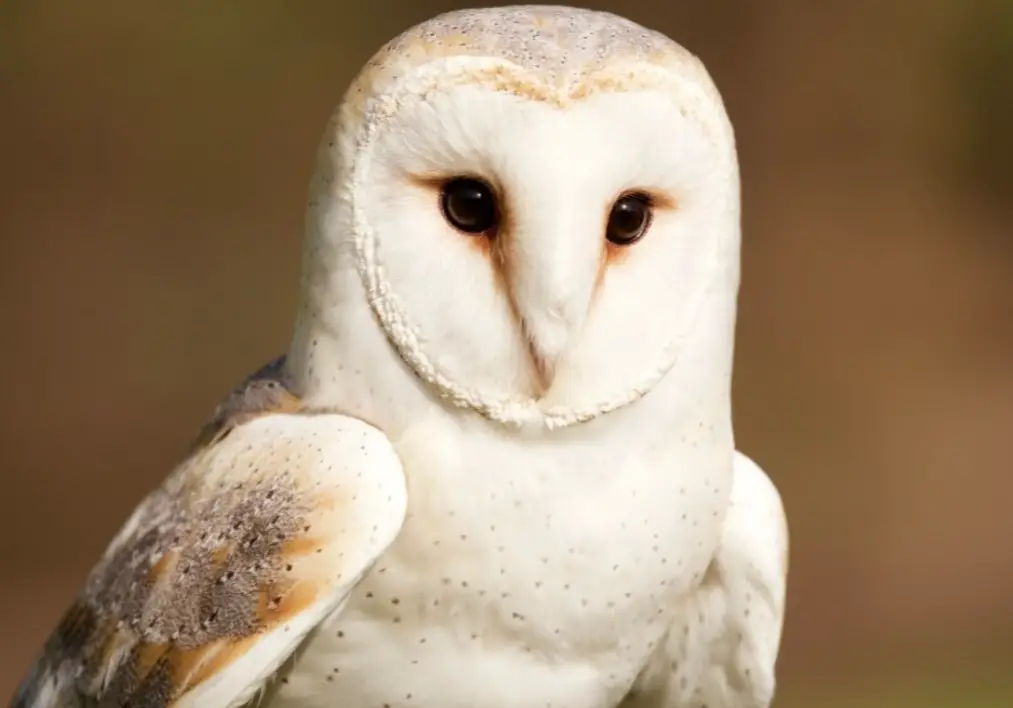With photos and key information, we’ll describe the most prevalent owls in Idaho. Only reputable sources were used to acquire this data, which was confirmed with an ornithologist.
There are many different types of owls that can be found in Idaho. Some of the most common include the great horned owl, the barn owl, and the barred owl. Each species has its own set of characteristics and activities. In this blog article, we’ll look at several common owls in Idaho and learn more about their routines and behavior.
Most Common Owls in Idaho
Great Horned Owls
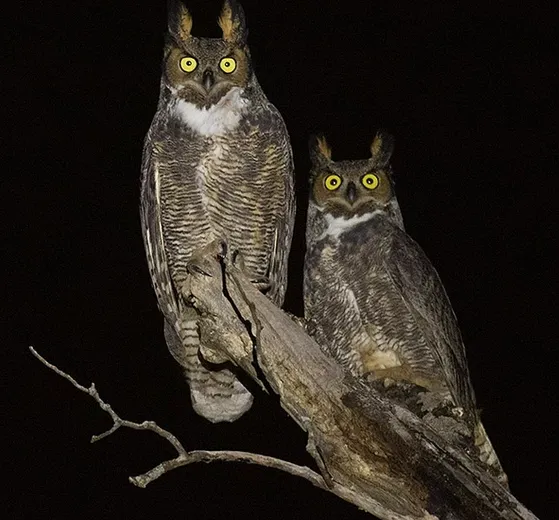
Great Horned Owls are one of the most widespread owl species in North America. They’re found in nearly every type of habitat, from deserts to forests to urban areas. Great Horned Owls are large owls, with a body length of 18-25 inches and a wingspan of up to 60 inches. They have large heads, prominent ear tufts, and yellow eyes. Their plumage is mostly brown, with white patches on the chest and belly.
Great Horned Owls are fierce predators, hunting a wide variety of prey items. They will even take on larger prey items, such as skunks and rabbits. Great Horned Owls are also known to take advantage of bird feeders, feeding on birds and rodents that come to the feeder.
Great Horned Owls are well-adapted for life in cold climates. They have thick plumage that helps them stay warm, and they can also cover their face with their wings to keep warm. Great Horned Owls are mostly nocturnal, and they often roost during the day in sheltered areas, such as trees or cliffs.
Great Horned Owls are a common sight in Idaho. They can be found in all parts of the state, from the desert to the mountains. Great Horned Owls are well-adapted to life in Idaho, and they are a fascinating species to watch. If you’re lucky, you may get to see a Great Horned Owl in action!

Barred Owl
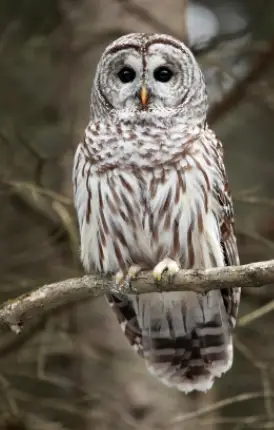
Barred Owl Scientific Name: Strix varia
The Barred Owl is a medium-sized owl with brown and white barring on its feathers. It has a round head, yellow eyes, and a black beak. The Barred Owl is mostly nocturnal, but can also be seen during the day. It feeds on small mammals, birds, reptiles, and amphibians. The Barred Owl is found in forests and woodlands throughout North America.
The Barred Owl is a very adaptable owl and can be found in a variety of habitats, including forests, woodlands, swamps, and even urban areas. It has strong talons that allow it to capture prey such as small mammals, birds, reptiles, and amphibians. The Barred Owl is also known to eat insects, such as grasshoppers and crickets.
The Barred Owl is mostly nocturnal, but can also be seen during the day. It has very good vision and hearing, which allows it to hunt its prey in darkness. The Barred Owl’s call is a series of deep hoots that can be heard up to a mile away. It is a common owl in North America and can be found in many states.
The Barred Owl is a beautiful owl with its brown and white barring on its feathers. It is a medium-sized owl and is mostly nocturnal, but can also be seen during the day. The Barred Owl has strong talons that allow it to capture prey, such as small mammals, birds, reptiles, and amphibians. If you are lucky enough to see a Barred Owl in the wild, you will be sure to remember its beauty and impressive hunting skills.

American Barn Owl
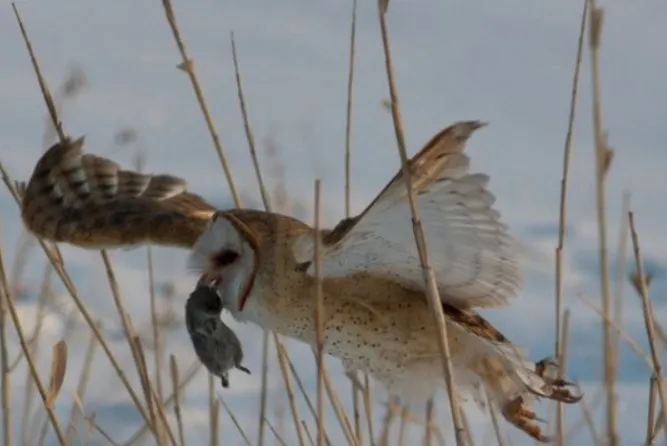
The American Barn Owl is one of the most widespread owl species in North America. They can be found in a variety of habitats, including open fields, agricultural lands, forests, and marshes.
American Barn Owls are relatively large owls, with a wingspan of up to 47 inches. They have a white face and chest with brown and grey feathers on their back and wings. Their diet consists mostly of small mammals, such as mice and voles.
American Barn Owls are nocturnal hunters. They use their sharp claws and beak to kill their prey. These owls mate for life and typically produce two to six offspring per year.

Great Gray Owl
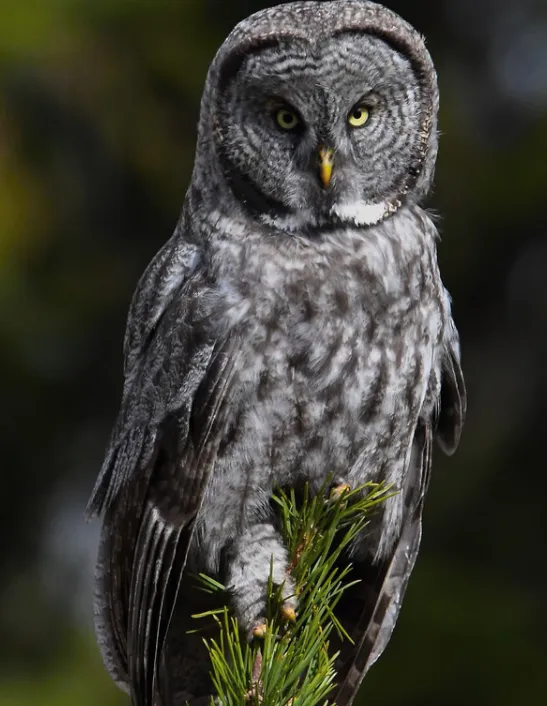
The Great Gray Owl is the largest owl in North America and can be found in Idaho. They are gray with a white throat and breast, their eyes are yellow and their wingspan can reach up to five feet. Great Gray Owls prey on small rodents, but will also eat other birds and reptiles. They breed in late winter or early spring and the female typically lays two to four eggs. The Great Gray Owl is a quiet bird and can be difficult to see in the wild. They are listed as threatened in Idaho.
Great Gray Owls are the largest owl in North America and can weigh up to three pounds. They have gray feathers with a white throat and breast, their eyes are yellow, and their wingspan can reach up to five feet. Great Gray Owls prey on small rodents, but will also eat other birds and reptiles.
They breed in late winter or early spring and the female typically lays two to four eggs. The Great Gray Owl is a quiet bird and can be difficult to see in the wild. In Idaho, they are listed as threatened.
If you’re lucky enough to see a Great Gray Owl in Idaho, you’ll be able to observe some of the following behaviors: perching on high branches, flying low over the ground in search of prey, and nesting in trees or on the ground. Great Gray Owls are monogamous and mate for life.
They are also one of the longest-living owl species, living up to 20 years in the wild. So if you’re lucky enough to see one in Idaho, be sure to take some time to appreciate this beautiful bird!

Short-eared Owls
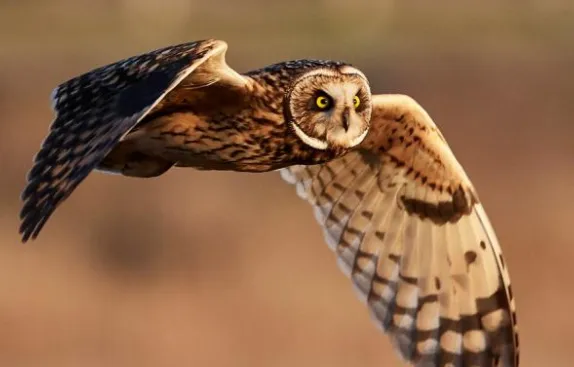
Short-eared Owls are a species of true owl. The scientific name for this bird is Asio flammeus. This owl is a medium-sized bird with long legs and a short tail. The head is large and round with big, black eyes. Short-eared Owls have small ear tufts, which are barely visible.
The plumage of this owl is brown and streaked with white. The underside is lighter in color than the upper parts. Short-eared Owls are found in open areas such as grasslands, prairies, and marshes. These owls hunt during the day and at night.
They eat small mammals such as voles, mice, and rats. Short-eared Owls are preyed upon by larger raptors such as hawks and owls. These owls are found in North America, Europe, Asia, and Africa.
Short-eared Owls are a species of true owl. The scientific name for this bird is Asio flammeus. This owl is a medium-sized bird with long legs and a short tail. The head is large and round with big, black eyes.
Short-eared Owls have small ear tufts, which are barely visible. The plumage of this owl is brown and streaked with white. The underside is lighter in color than the upper parts.

Eastern Idaho Owls
Owls are nocturnal predators, so they are most active at night. However, you may see them hunting during the day if there is not enough light for them to see their prey at night.
Owls hunt by flying low over the ground and using their sharp vision and hearing to locate small mammals, such as mice and voles. They can also catch birds in flight.
Owls have very good hearing and can locate their prey by the sound of its movements. They can even hear rodents underground! Their eyes are set forward on their head so they can see well in all directions. This helps them to spot prey while flying or when perched on a branch.
Owls have large, powerful talons that they use to grip and kill their prey. They also have sharp beaks that they use to tear apart their food. Owls eat a variety of small mammals and birds. Some of the more common prey items include mice, voles, shrews, moles, rabbits, hares, squirrels, chipmunks, and birds.
Eastern Idaho Owls typically nest in trees, but they will also use man-made structures, such as buildings and bridges. The female owl lays two to six eggs in a nest made of sticks, leaves, and other soft materials.
She incubates the eggs for about 28 days. Both the male and female help to feed the owlets (baby owls) until they are old enough to fend for themselves.
Flammulated Owl
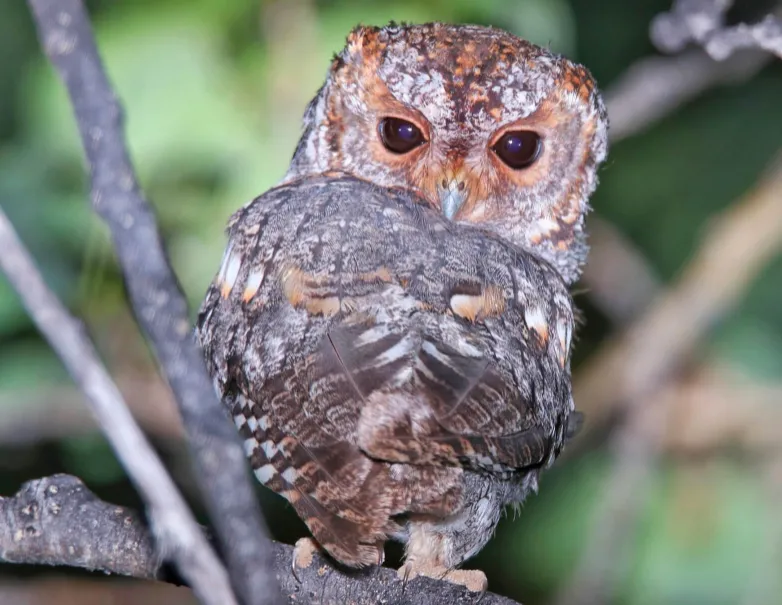
The Flammulated Owl is a small owl with big eyes. It has a round head with no ear tufts, and its plumage is gray-brown above and pale below, with dark streaks on the breast. Its call is a sharp, high-pitched trill.
Flammulated Owls breed in coniferous forests in the western United States and Mexico. In Idaho, they are found in ponderosa pine and Douglas-fir forests at elevations of 4000 to 9000 feet.
These owls prey primarily on insects, particularly moths. They hunt from a perch, flying out to catch their prey in midair. Flammulated Owls also eat small mammals and birds.
Flammulated Owls are generally secretive, shy birds. They typically roost in trees during the day and hunt at night. However, they may be active during the day when there is a lot of prey available.
Flammulated Owls are monogamous and pairs usually stay together year-round. The female builds the nest, which is a small platform of sticks lined with grass or moss. The eggs are incubated for about 28 days, and the young owls fledge (leave the nest) at about 33 days old.
Flammulated Owls in Idaho can be seen from mid-May through September. They are most likely to be seen during the early morning or evening hours.

Boreal Owl
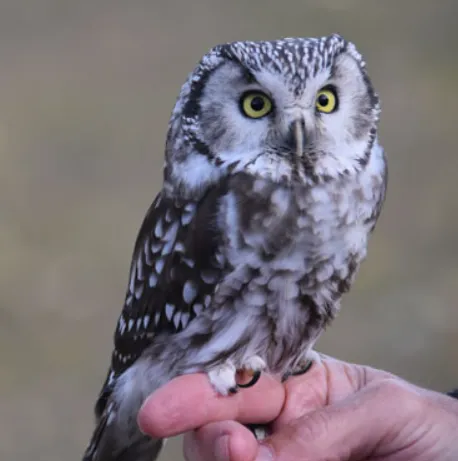
The Boreal Owl is the smallest owl in North America. They are about nine inches tall and have a wingspan of about 20 inches. They are brown with white spots on their head and chest.
They live in forests near the treeline in Canada, Alaska, and northern Idaho. They eat small rodents, insects, and other birds. They are very quiet and difficult to see in the forest. They nest in tree cavities or abandoned buildings.
Boreal Owls are monogamous and both the male and female take care of the young. The eggs are incubated for about 27 days, and the young stay with their parents for about six weeks. Boreal Owls can live for up to 15 years in the wild.
If you’re lucky enough to see a Boreal Owl, it’s sure to be a memorable experience! These fascinating creatures are just one of the many reasons why Idaho is such a great place to live. So keep your eyes peeled and enjoy the beauty of Idaho’s wildlife!
Related article: Types of Owls in Vermont

Northern Pygmy-Owls
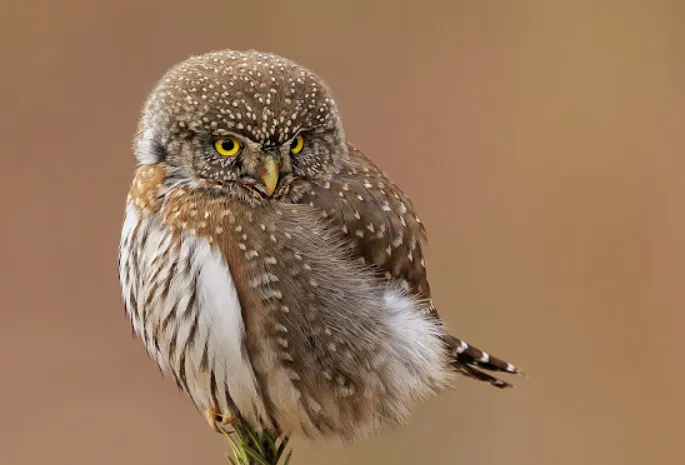
Northern Pygmy-Owls are small owls that are found in North America. They are the smallest owl species in North America, and they have a gray or brown bodies with white spots on their head.
Northern Pygmy-Owls typically eat insects, but they can also eat other small animals like rodents. These owls are nocturnal, which means that they are most active at night. Northern Pygmy-Owls typically nest in trees, and they usually have two to three eggs per clutch.
If you’re lucky enough to spot a Northern Pygmy-Owl in the wild, you’ll be able to see its distinctive features up close. These owls have large, round heads with yellow eyes.
They also have small beaks and ear tufts. Northern Pygmy-Owls are typically about seven to eight inches long, and they have a wingspan of about sixteen inches.

Burrowing Owls

Burrowing Owl Scientific Name: Athene cunicularia
Burrowing owls are small, long-legged owls. They get their name from their habit of living in burrows, which they either dig themselves or use those abandoned by other animals such as prairie dogs.
Burrowing owls are found in North and South America. In the United States, they are most common in the Great Plains and the Southwest.
Burrowing owls are year-round residents in Idaho. They can be found in open prairies, grasslands, pastures, agricultural fields, airports, golf courses, and other open areas.
Burrowing owls are one of the few owl species that hunt during the daytime. They eat a variety of prey, including rodents, small reptiles, insects, and other birds.
Burrowing owls are important predators of prairie dogs. Prairie dogs can have large populations that can damage crops and rangelands. Burrowing owls help to keep these populations in check.

Snowy Owls
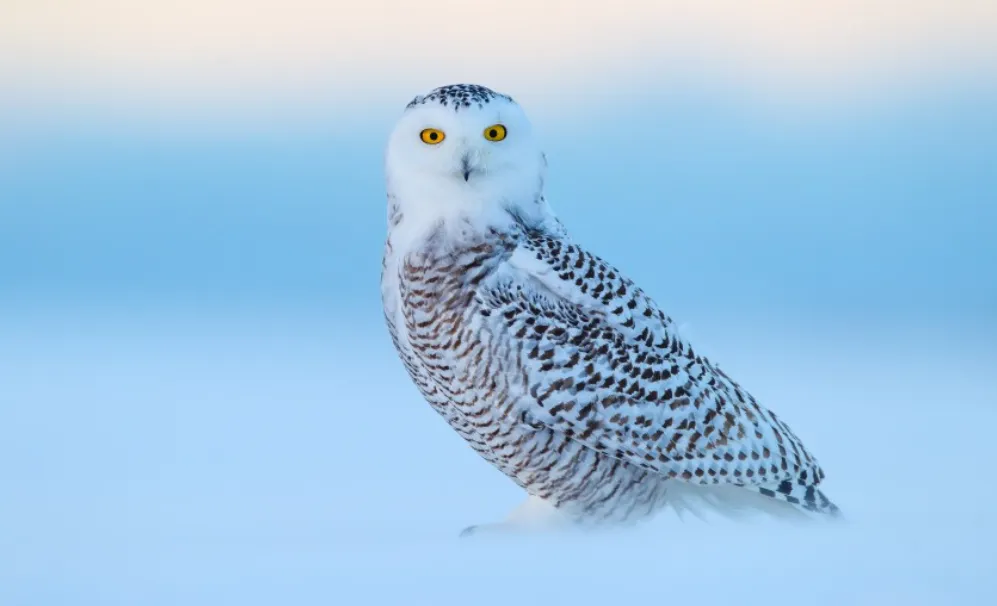
Snowy owls are one of the most beautiful and majestic creatures in North America. They are also one of the largest owl species, with a wingspan of up to five feet! Snowy owls are mostly white, with some dark markings on their wings and back.
These birds are amazing hunters and can take down prey much larger than themselves. In the wild, snowy owls typically live in very remote areas, like the tundra of Alaska or Canada. But every so often, these owls will venture south into the continental United States, including Idaho!

Western Screech-Owl
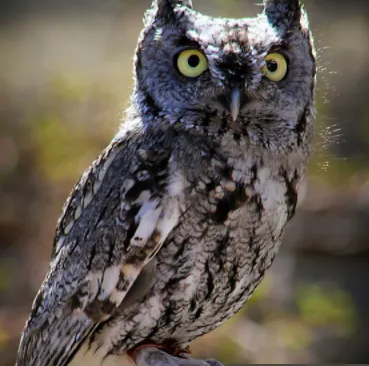
The Western Screech-Owl is a medium-sized owl found in western North America. They are the most common owl in Idaho. These owls have brown or gray feathers, and they have a white throat and belly.
They have large eyes and a characteristic “whoop” call that gives them their name. Western Screech-Owls are nocturnal, and they eat small mammals, birds, and insects. They build nests of sticks in trees or cavities. Western Screech-Owls are a common sight in Idaho’s forests and woodlands.
These owls have brown or gray feathers, and they have a white throat and belly.
They have large eyes and a characteristic “whoop” call that gives them their name.
Western Screech-Owls are nocturnal, and they eat small mammals, birds, and insects.

Long-eared Owl
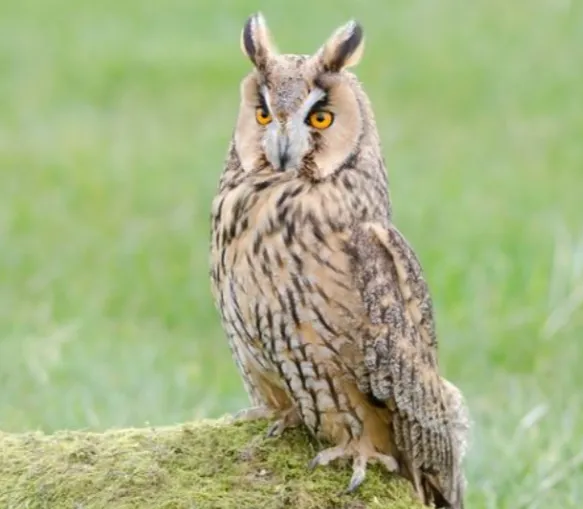
The long-eared owl is a medium-sized owl with ear tufts. It has yellow eyes and a black beak. The body is brown and white, and the wings are mottled. This owl gets its name from its long ear tufts, which can be as long as three inches!
The long-eared owl is a secretive owl and is not often seen. It feeds on small mammals, like rodents, and also eats birds. This owl is found in open areas, like prairies and fields, as well as in forests. The long-eared owl is a common bird in Idaho.
The long-eared owl is a medium-sized owl with ear tufts. It has yellow eyes and a black beak. The body is brown and white, and the wings are mottled. This owl gets its name from its long ear tufts, which can be as long as three inches!
The long-eared owl is a secretive owl and is not often seen. It feeds on small mammals, like rodents, and also eats birds. This owl is found in open areas, like prairies and fields, as well as in forests. The long-eared owl is a common bird in Idaho. It can be identified by its brown body, white wings, and yellow eyes.

Northern Saw-Whet Owl
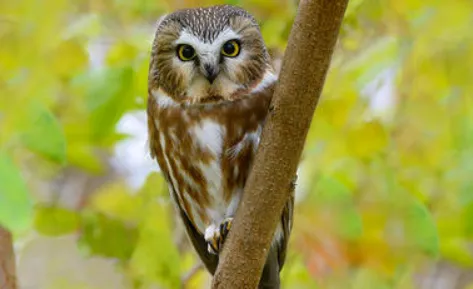
The Northern Saw-Whet Owl is a medium-sized owl with a length of 18 to 20 inches and a wingspan of 40 inches. It has a round head, large yellow eyes, and prominent brow ridges. The upperparts are grayish-brown with fine darker barring, while the underparts are white with heavy dark streaking.
The Saw-Whet Owl is found in boreal forests of North America, where it nests in tree cavities. It hunts small mammals, rodents, and birds. This owl is nocturnal and is most active at night. When roosting during the day, it often perches on a stump or branch with its head turned to one side.
The Northern Saw-Whet Owl is a medium-sized owl with a length of 18 to 20 inches and a wingspan of 40 inches. It has a round head, large yellow eyes, and prominent brow ridges.
The upperparts are grayish-brown with fine darker barring, while the underparts are white with heavy dark streaking. The Saw-Whet Owl is found in boreal forests of North America, where it nests in tree cavities.
It hunts small mammals, rodents, and birds. This owl is nocturnal and is most active at night. When roosting during the day, it often perches on a stump or branch with its head turned to one side.
The Northern Saw-Whet Owl is a medium-sized owl with a length of 18 to 20 inches and a wingspan of 40 inches. It has a round head, large yellow eyes, and prominent brow ridges.

Northern Hawk Owl
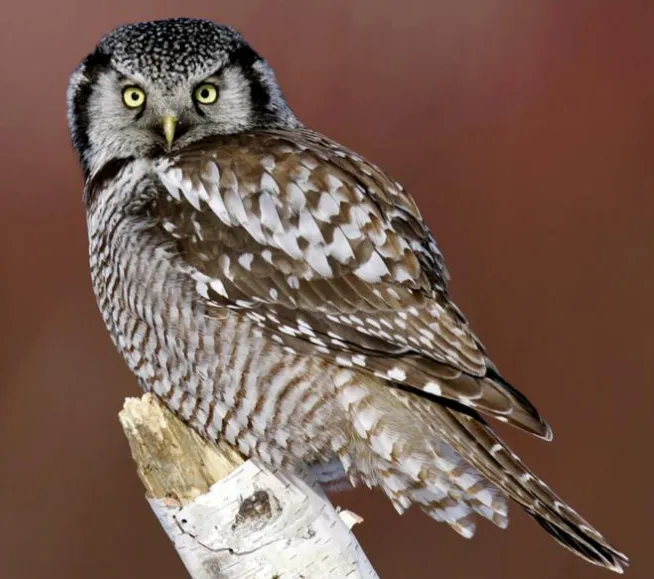
The Northern Hawk Owl is a medium-sized owl with brown and white markings on its body. It has a round head, yellow eyes, and a hooked bill. The Northern Hawk Owl is most active at dawn and dusk when it hunts for small mammals such as rodents and rabbits. This owl can also be seen perched atop trees or utility poles.
The Northern Hawk Owl is a migratory bird and can be found in the northern United States and Canada during the winter months. In Idaho, this owl can be spotted in the Boise National Forest and around McCall. The Northern Hawk Owl is a protected species under the Migratory Bird Treaty Act.
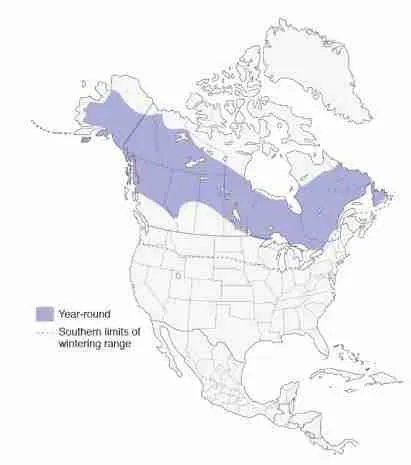

An avid ornithologist, zoologist and biologist with an unwavering passion for birds and wild animals.
Dr. Wilson’s journey in ornithology began in childhood and led him to obtain a Ph.D. in Ornithology from the prestigious Avian Research Institute. He has worked closely with renowned experts in the field and conducted extensive research and field studies globally.

